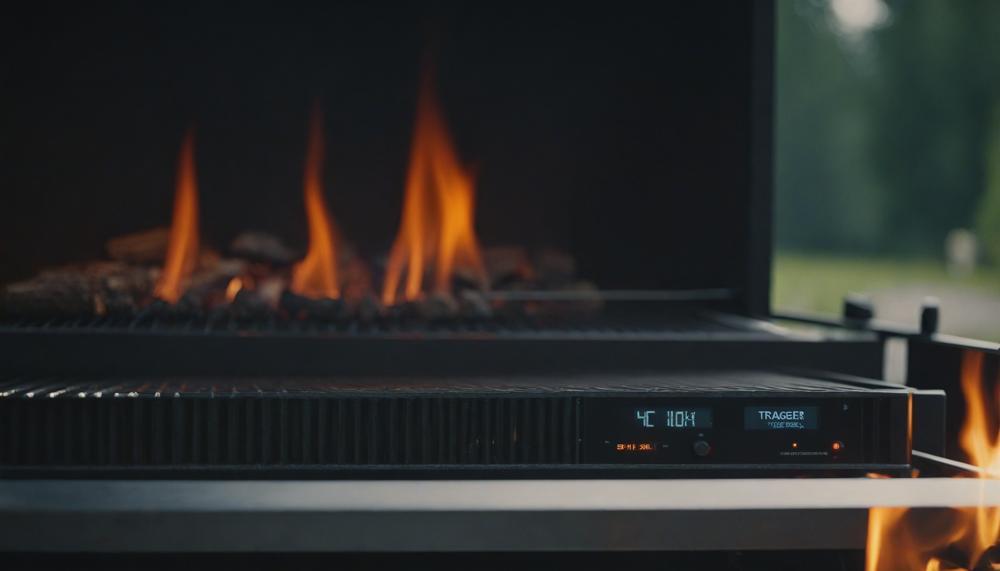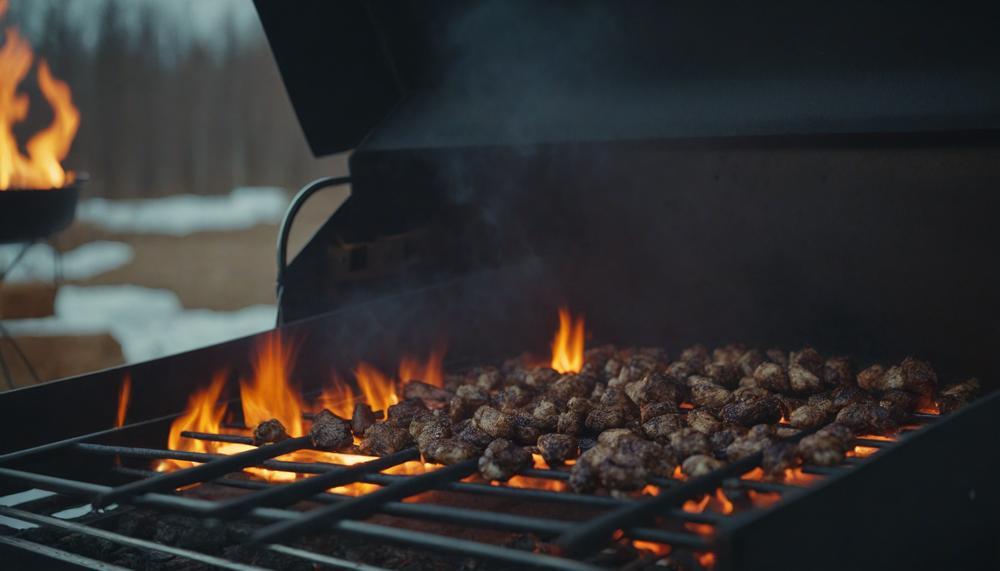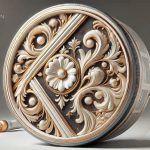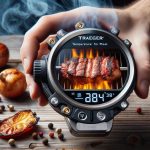Ever set up your Traeger grill for a perfect BBQ session, only to find it struggling to maintain the right temperature? This can be incredibly frustrating, especially when you’re aiming for that perfect cook. But don’t worry, you’re not alone. Many Traeger users experience temperature swings, and understanding why this happens can help you get back to grilling with confidence.
In this article, we’ll explore the common reasons your Traeger might not be staying up to temperature and provide practical solutions to get you back on track. Here’s a sneak peek at what we’ll cover:
- Wood Pellet Quality: Low-grade pellets can affect your grill’s performance.
- Start-Up and Shut-Down Procedures: Incorrect processes can lead to temperature issues.
- Maintenance: Regular upkeep is crucial for consistent temperature control.
- Power Supply: Fluctuations can impact your grill’s ability to maintain heat.
- Weather Conditions: External factors like wind and cold can interfere with temperature stability.
- Faulty Parts: Sometimes, components may need replacement to ensure proper functioning.
Stay tuned as we delve into each of these points, offering tips and tricks to keep your Traeger running smoothly. By understanding these factors, you’ll be able to troubleshoot effectively and enjoy hassle-free grilling sessions every time.
Contents
Hot Rod Deterioration
Hot rod deterioration can have a significant impact on the temperature consistency of your Traeger grill. The hot rod is the critical component responsible for igniting the pellets and starting the fire, ensuring a steady heat source for cooking.
When the hot rod begins to fail, it can lead to various problems that disrupt the grilling process.
| Problem | Cause | Solution |
| Inconsistent Heating | Deteriorated hot rod fails to ignite pellets properly | Replace the hot rod |
| Increased Smoke Production | Pellets smolder due to insufficient ignition | Clean and maintain the hot rod |
| Difficulty Starting the Grill | Hot rod cannot generate enough heat | Check electrical connections and replace the hot rod |
| Poor Flavor in Food | Inconsistent temperature and excess smoke | Ensure proper maintenance and replace the hot rod if needed |
| Potential Safety Hazards | Improper ignition and uncontrolled flare-ups | Do not use the grill with a bad hot rod; replace immediately |
| Longer Heating Times | Hot rod struggles to reach target temperature | Replace the hot rod |
Low-Quality Pellets
The signs that your pellets may be of low quality include being old, damp, or visibly deteriorated. Pellets that crumble easily, have an inconsistent shape, or emit a musty smell are also indicators of poor quality.
Low-quality pellets can significantly impact the performance of your Traeger grill, causing inefficient burning and unpredictable temperature fluctuations.
| Signs of Low-Quality Pellets | Impact on Temperature | Solutions |
| Old and crumbly | Inefficient burning | Use fresh, high-quality pellets |
| Damp or musty smell | Temperature fluctuations | Store pellets in a dry place |
| Inconsistent shape and size | Inconsistent heat | Regularly clean the grill and check for proper airflow |
| Visible deterioration | Difficulty maintaining temperature | Ensure a full hopper of quality pellets |
Not Enough Pellets in the Grill
To tell if there are not enough pellets in your grill, look for the following signs:
- Temperature Fluctuations: The grill struggles to maintain a steady temperature.
- Frequent Shutdowns: The grill may turn off unexpectedly.
- Pellet Hopper is Low: Visually inspect the hopper; if the pellets are low or you can see the bottom, it’s time to add more.
To maintain the proper amount for consistent temperature control, follow these steps:
- Regularly Check the Pellet Level: Make it a habit to check the pellet hopper before each cooking session. Top it up as needed to ensure there are always enough pellets to maintain a consistent temperature.
- Use High-Quality Pellets: Ensure you’re using high-quality pellets to avoid issues with moisture and consistency. Store pellets in a dry, cool place to prevent them from absorbing moisture, which can affect performance.
- Clean the Grill: Regularly clean your grill to ensure there are no blockages in the auger or firepot, which can impede pellet delivery. A clean grill also ensures proper airflow, crucial for consistent combustion.
- Monitor Components: Regularly inspect the auger, fans, and firepot to ensure they are functioning correctly. Any malfunctioning parts should be repaired or replaced promptly.
Blown Fuses
Blown fuses are a common culprit behind Traeger grills not maintaining their temperature. Here are some primary reasons for this issue:
| Reason | Explanation | Solution |
| Electrical Overload | Traeger grills are designed to handle a specific electrical load. Overloading the system with too many accessories or faulty wiring can cause fuses to blow. | Check and ensure all wiring is intact and not overloaded. Disconnect unnecessary accessories and replace the fuse with the one recommended by Traeger. |
| Moisture Exposure | Exposure to moisture, especially in the control panel or wiring, can lead to electrical short circuits, resulting in blown fuses. | Always use a cover to protect your grill from rain and moisture. Make sure all components are dry before operating the grill. |
| Faulty Components | Components like the hot rod or induction fan can develop faults over time, which might cause a fuse to blow. | Inspect and replace faulty components. Ensure the hot rod glows red when heating and that the induction fan operates smoothly. |
| Poor Quality Fuses | Using non-recommended fuses can lead to frequent fuse blows due to incompatibility with the grill’s electrical system. | Only use fuses recommended by Traeger to ensure compatibility and safety. |
Regular maintenance and using the right parts are key to avoiding blown fuses. By understanding and addressing these common issues, you can keep your Traeger grill operating at optimal temperature.
Too Much Debris in the Firepot
Excess debris in the firepot significantly disrupts the temperature regulation of a Traeger grill. The accumulation of ash and other residues obstructs the airflow essential for proper combustion. This obstruction hinders the grill’s ability to reach and maintain the desired temperature.
Here’s a breakdown of the effects:
| Issue | Description | Impact |
| Blocked Airflow | Debris clogs the firepot, restricting the flow of air. | Poor combustion, leading to lower temperatures and uneven heating. |
| Temperature Fluctuations | Inconsistent air supply causes temperature spikes and drops. | Difficulty in cooking food evenly, longer cooking times. |
| Firepot Overheating | Debris can cause heat to build up excessively in one area. | Potential damage to grill components, unsafe grilling conditions. |
To prevent these issues, regularly clean the firepot by turning off the grill, letting it cool, and removing accumulated ash and debris. This maintenance ensures optimal airflow and temperature control, keeping your Traeger grill in top condition.
Moisture in the Grill
Moisture in the grill can significantly impact the temperature control of a Traeger grill. When moisture accumulates, it can interfere with the burning process of the pellets, leading to uneven temperatures and inefficient combustion.
This often results in temperature fluctuations that make it challenging to maintain the desired heat level for consistent cooking.
How Moisture Affects Temperature Control:
| Issue | Effect on Temperature | Explanation |
| Moisture in Pellets | Temperature Drops | Wet pellets do not burn efficiently, causing the grill to struggle in maintaining high temperatures. |
| Moisture in Firepot | Temperature Fluctuations | Water in the firepot disrupts the combustion process, leading to irregular burning and unstable temperatures. |
| Humidity in Grill Chamber | Inconsistent Heat Distribution | Excessive moisture inside the grill can lead to steam, which affects the even distribution of heat. |
Preventing Moisture Issues:
Store Pellets Properly
:
- Keep Pellets Dry: Store your pellets in a cool, dry place, preferably in an airtight container to prevent moisture absorption.
- Check Pellet Condition: Before using, ensure pellets are dry and free from clumps.
Maintain the Grill
:
- Cover the Grill: Use a weatherproof cover to protect the grill from rain and humidity.
- Regular Cleaning: Clean the firepot and grill chamber after each use to prevent moisture buildup.
Use High-Quality Pellets
:
- Select Premium Pellets: Opt for high-quality pellets that are less likely to absorb moisture. Brands with good sealing and packaging help reduce this risk.
Preheat the Grill
:
- Proper Preheating: Always preheat the grill to evaporate any residual moisture before cooking.
Monitor Weather Conditions
:
- Grill Placement: If possible, position your grill in a sheltered area to reduce exposure to rain and high humidity.
Broken Induction Fan
A Traeger grill not maintaining the desired temperature can stem from several issues, but a broken induction fan is a prime suspect. The induction fan is crucial for regulating airflow and ensuring consistent combustion, which directly impacts temperature stability.
Here’s how a broken induction fan contributes to this problem:
- Airflow Disruption: The induction fan circulates air to maintain a consistent fire. If the fan is malfunctioning, the fire may not receive adequate oxygen, leading to unstable temperatures.
- Inconsistent Combustion: Without proper airflow, the wood pellets may not burn evenly. This inconsistency can cause temperature fluctuations, making it difficult for the grill to stay at the set temperature.
- Sluggish Heating: A failing fan can result in poor air suction, causing the grill to heat up sluggishly. This means it might reach the desired temperature slower than usual or not at all.
Other Potential Causes and Solutions
:
| Issue | Cause | Solution |
| Not Heating to 300°F | Faulty RTD probe or auger fan | Replace RTD probe or check/replace auger fan |
| Temperature Fluctuations | Broken induction fan or windy conditions | Replace induction fan and ensure grill is shielded from wind |
| Poor Combustion | Moisture in pellets or low-quality pellets | Use fresh, high-quality pellets and store them properly |
Maintaining your Traeger grill’s temperature stability hinges on ensuring all components, particularly the induction fan, are functioning correctly. Replacing a broken induction fan is often the first step to restore your grill’s performance. For more detailed maintenance tips, you can refer to Traeger’s official maintenance guide.
Remember, regular maintenance and using quality pellets can prevent many common issues.

Conclusion
Grilling on a Traeger can sometimes be a challenge when the grill doesn’t maintain its temperature. The key factors to consider involve the quality of wood pellets, proper start-up and shut-down procedures, regular maintenance, and even weather conditions.
First and foremost, using high-quality, dry pellets ensures efficient burning and stable temperatures. Always store your pellets in a cool, dry place to avoid moisture issues. Additionally, following the correct start-up and shut-down procedures is crucial to avoid temperature fluctuations and grill malfunctions.
Regular maintenance, including cleaning the grill grates, grease tray, and firepot, extends the life of key components like the hot rod and induction fan. This prevents issues such as inconsistent heating, excessive smoke, and potential safety hazards.
External factors like wind and cold can also affect temperature stability. Using a Traeger insulation blanket or shielding the grill from wind can mitigate these effects. Finally, check for any blown fuses or faulty parts, which might need replacement to ensure the grill functions properly.






